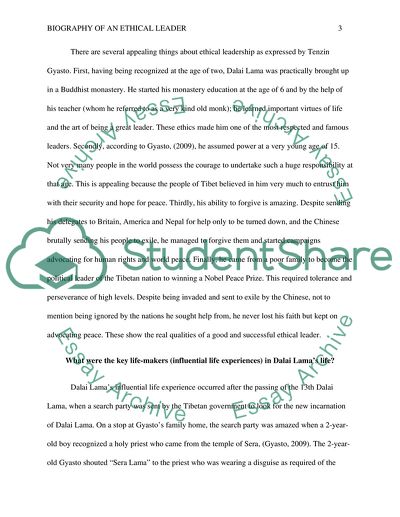Cite this document
(Biography of an Ethical Leader (Dalai Lama) Research Paper, n.d.)
Biography of an Ethical Leader (Dalai Lama) Research Paper. Retrieved from https://studentshare.org/religion-and-theology/1847290-biographyautobiography-of-an-ethical-leader
Biography of an Ethical Leader (Dalai Lama) Research Paper. Retrieved from https://studentshare.org/religion-and-theology/1847290-biographyautobiography-of-an-ethical-leader
(Biography of an Ethical Leader (Dalai Lama) Research Paper)
Biography of an Ethical Leader (Dalai Lama) Research Paper. https://studentshare.org/religion-and-theology/1847290-biographyautobiography-of-an-ethical-leader.
Biography of an Ethical Leader (Dalai Lama) Research Paper. https://studentshare.org/religion-and-theology/1847290-biographyautobiography-of-an-ethical-leader.
“Biography of an Ethical Leader (Dalai Lama) Research Paper”, n.d. https://studentshare.org/religion-and-theology/1847290-biographyautobiography-of-an-ethical-leader.


